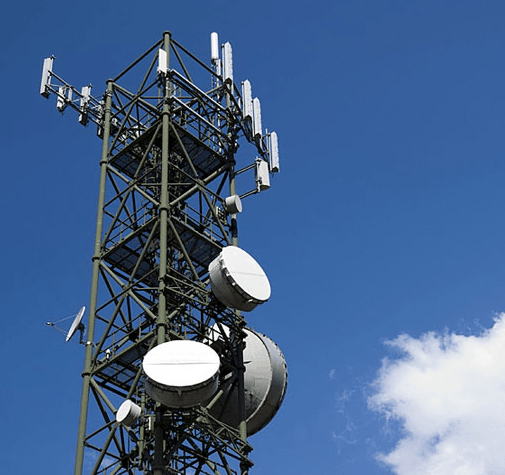 About 875 million subscribers are now part of Indian Telecom story.
About 875 million subscribers are now part of Indian Telecom story.
Estimated Population of India as per Census is at 1.22 billion population surviving on less than 1 Dollar a day from this comes to around 450 billion.
If we take into account the poverty statistics from the official data, the 400 million balance population survives on less than $ 1 a day, and probably has other things on their priority list rather than having a cellphone.
Or can we say that anyone who can afford it has one…???Indian Telecom space, due to its dynamic nature needs to invent newer Business Models to match the pace of Industry and demands of customers.
Directly or indirectly its clear focus is on 3 Parameters:
- Rural Reach – for Expansion.
- Revenue Per Minute concept – for Sustenance.
- Retention of Subscriber base – for competition.
Let me briefly touch upon current trends through which we can easily visualize existence of 3R’s model focused by operators.
• According to the Telecom Regulatory Authority of India (TRAI), the number of new subscribers for May 2011 fell to 13.35 million compared to April 2011 which was 15.9 million. In March 2011, telecom operators added over 20m subscribers. This clearly indicates Saturation in urban subscriber base.
Future Growth in subscriber base will definitely boost only incase Rural market is tapped. Increase in Rural penetration will primarily depend upon how government makes a lucrative policy or a law which gives Right to mobile to every citizen. Apart from this, government needs to rejuvenate existing USOF (Universal Service Obligation Fund) to ensure maximum and active participation from private Telecom Service providers.
• Heat on the Bottomlines is ‘ON’ for Telecom companies. Bharti Airtel saw net profits 31 percent while Reliance Communications saw a vertical drop of 86 percent.
The reasons for the two declines were different: Bharti lost due to the costs of its African acquisition, while Reliance had too much debt on its books. But the underlying story is the same: Indian growth is reaching saturation point, even while the cost of doing business is rising.
The 3G (third generation) telecom spectrum auctions has forced most companies to borrow, and this is showing in higher costs.
• With Mobile Number Portability (MNP) in place it’s becoming more fierce competition – another sign that the market is not big enough for all to gain and prosper. Here a subscriber can take his number and shift to a different operator, this has been a gaining ground for big boys of the industry (Vodafone, Airtel and Idea) compare to the smaller players.
The industry is also seeing a major shift away from CDMA (code division multiple access) services to GSM (global system of mobile).The losers are Reliance Communications and Tata Teleservices.Market leaders like Bharti Airtel are foraying into new markets like Africa for growing numbers.
While players like Uninor and MTS are offering low tariffs to gain numbers, along with concentrating on retaining subscribers and engaging high value customers line other operators.
Concept of Revenue Per Minute (RPM) is gaining momentum in industry as Operators now want the subscriber who spends more time on the network using data, roaming or other value added services. Big Boys are no longer chasing the subscriber looking for cheap voice call rates.
Experts feel that over a period of time voice calls will be free and they will charge subscriber only on Value added Services (VAS). 3G services will drive future of Wireless industry. Hence Operators today want is a subscribers who can give more revenues per minute (RPM) by sticking to their network.
By April 2011, India had 9m subscribers to 3G services launched by various operators. E&Y expects this number to reach 142 m by 2015, accounting for 12% of the total subscriber base.
Likewise in all other industries In telecom industry too we have two camps. Big Boys (Bharti, Vodafone and Idea), who have large subscriber bases, and the challengers, who are new entrants or looking to break into the top 3 (RCom, Aircel, Uninor).
The battle between ‘Big Boys’ and ‘Challengers’ continues on various grounds - Starting from Termination charges to subscriber acquisition through MNP.
As per TRAI estimates MNP has hurt CDMA service providers like Reliance Communications (Rcom), Tata Teleservices & BSNL more than GSM providers. Mobile users have moved to Vodafone, Idea and Bharti from RCom, Tata Teleservices and BSNL. As many as 10 million, or just less than 1% of the total subscribers, have utilized MNP service.
Like will every victory has its cost here too the gain from MNP for Big Boys is costly enough. For example, Bharti Airtel reported a decline of 2.4% in revenues per minute (RPM) and 1.6% in the operating profit margin for the quarter to March 2011 compared to the quarter ended December 2011. For Vodafone too, RPM fell 2.6% during the March 2011 quarter.
Consolidation in telecom space will reduce competition significantly and will offer a better level playing field to the operators. Still poor M&A rules in this sector stall any potential deal in same circle for operators. Industry still hopes for better and clear rules to be laid down by regulator for consolidation.
About the Author:
Tejas Dave is Regional Telecom Research/Business Analyst associated with one of the leading Telecom Operator in India. Previously he has worked with other Telecom operators and Worlds Largest Tower company. His role primarily gives him an opportunity to closely work with senior leaders of the Company,Industry and Government. He is also associated with Academic and professional organisations like WB India,World Economics Association,IDEAs & AMA.















